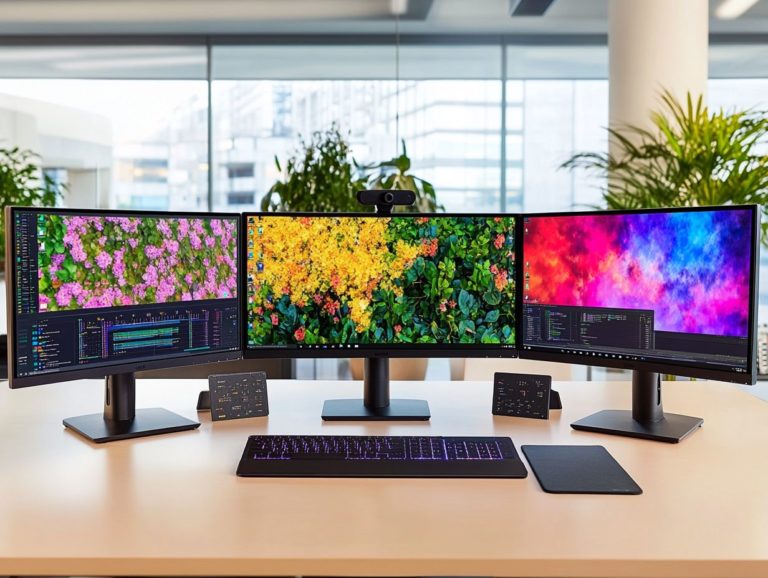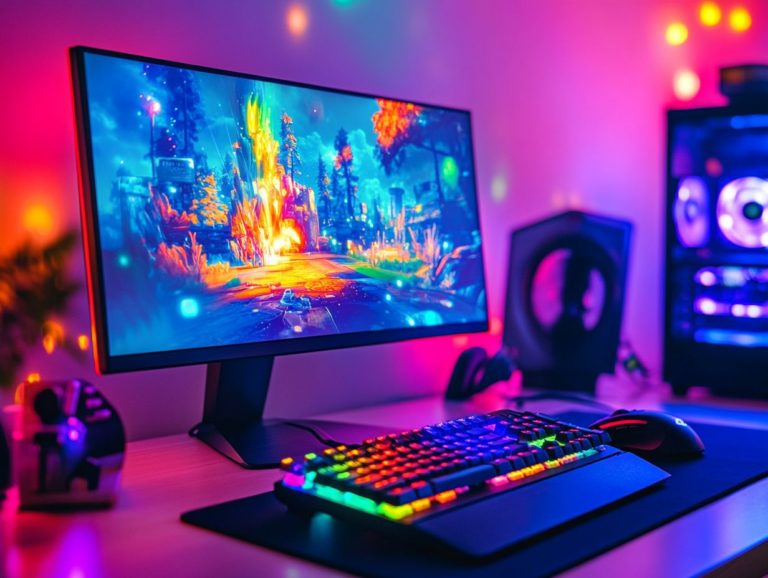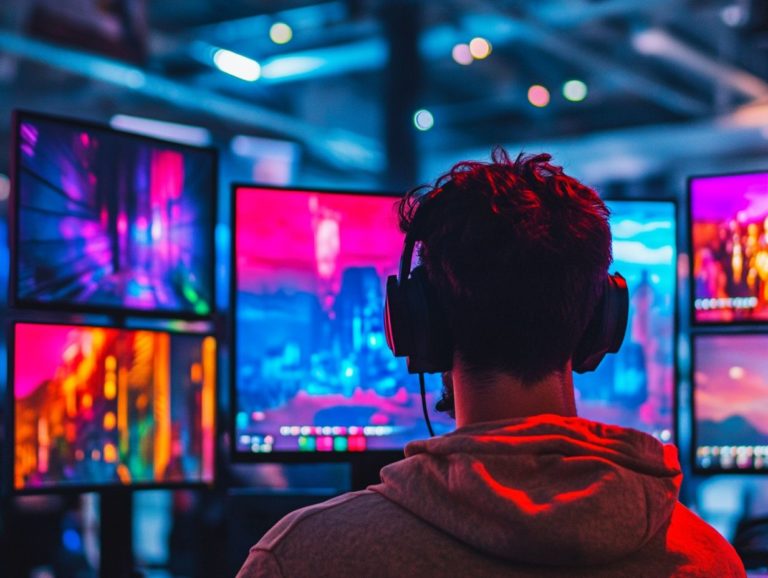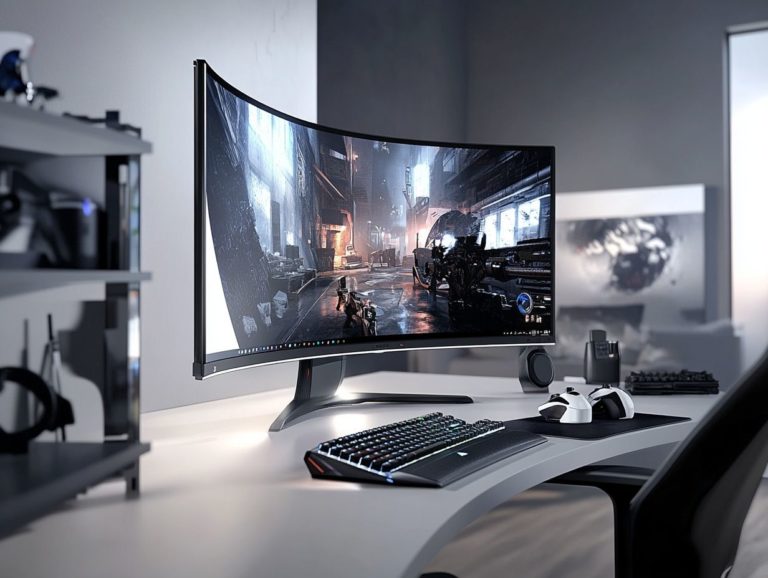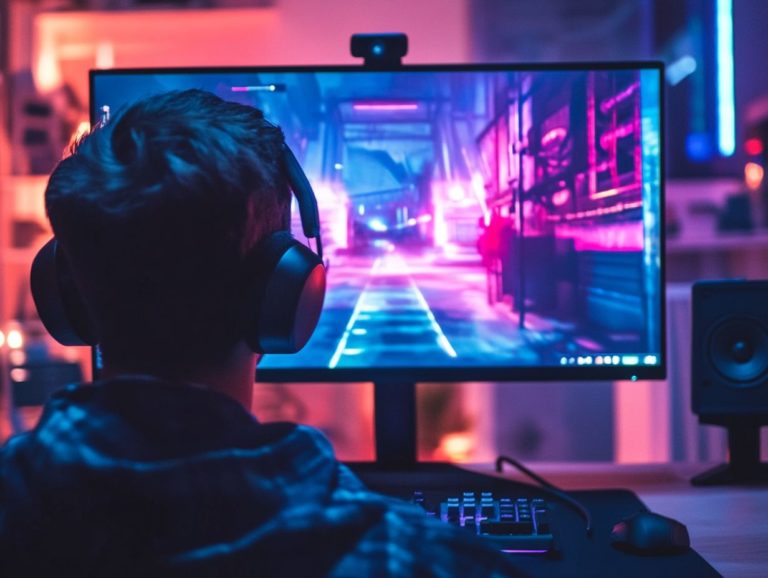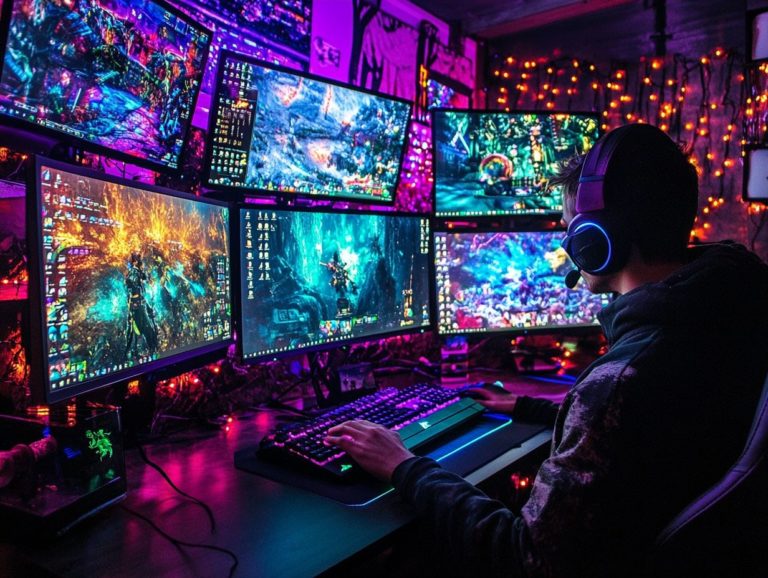how to troubleshoot common monitor issues
Monitors are essential tools in your daily digital life, yet they can sometimes present frustrating challenges.
Whether you’re grappling with flickering screens, color discrepancies, or complete blackouts, understanding these common symptoms is the key to quickly resolving your monitor issues!
This guide equips you with practical troubleshooting methods, ranging from basic steps to advanced techniques, to help you identify and fix common monitor problems.
It also includes maintenance tips to keep your monitor in peak condition and advice on when it s time to seek professional assistance.
Jump in and discover how to keep your viewing experience smooth and enjoyable!
Contents
- Key Takeaways:
- Identifying Common Monitor Issues
- Troubleshooting Methods
- Fixing Common Monitor Issues
- Preventing Monitor Issues
- When to Seek Professional Help
- Frequently Asked Questions
- How do I troubleshoot a blank screen on my monitor?
- Why is my monitor displaying a distorted image?
- How do I fix a flickering or flashing screen on my monitor?
- What should I do if my monitor is displaying the wrong resolution?
- How do I troubleshoot color display issues on my monitor?
- What should I do if my monitor won’t turn on?
Key Takeaways:
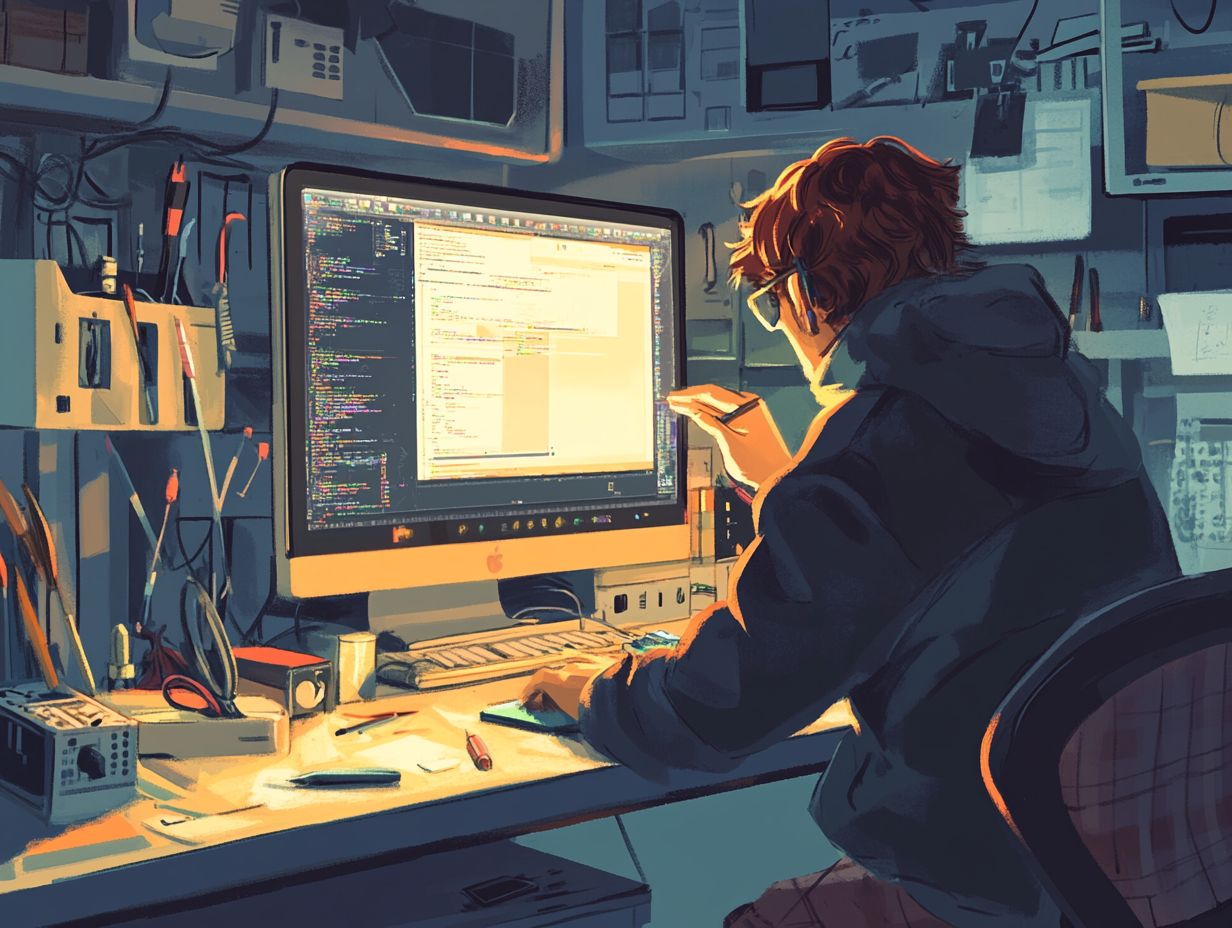
Monitor issues can be identified by understanding common symptoms such as flickering or blank screens.
Basic troubleshooting steps involve checking connections and adjusting settings, while advanced techniques may include system checks or software updates.
Most common monitor issues can be fixed by adjusting settings or replacing faulty components, but regular maintenance and proper usage can prevent future problems.
Identifying Common Monitor Issues
Identifying common monitor issues is essential for maintaining optimal display performance, particularly when using a computer monitor linked to a Dell laptop or an external display.
Screen abnormalities like flickers, vertical lines, and color mismatches can greatly affect your computing experience.
Knowing how to diagnose these display issues early can pave the way for effective troubleshooting, helping you steer clear of more severe problems down the line.
By recognizing symptoms such as dead pixels, which stubbornly remain black, or stuck pixels that display a fixed color, you can swiftly take action to restore your monitor to its factory default settings. This ensures a clearer, brighter image tailored to all your needs.
Understanding Common Symptoms
Understanding the common symptoms of monitor issues is your first step toward effectively diagnosing and addressing any display problems.
Being able to identify screen flickers those rapid, intermittent changes in brightness is crucial.
These flickers can be quite distracting and often hint at underlying hardware or connection troubles.
Similarly, if you notice vertical lines on your screen, it may indicate issues with the display s internal wiring or circuitry.
Recognizing these abnormalities allows for quicker intervention.
As you examine your monitor for issues, also keep an eye out for dead pixels those tiny spots that stubbornly remain black and stuck pixels, which display a fixed color.
Spotting these symptoms early can lead you to more effective repairs or replacements.
Troubleshooting Methods
In terms of troubleshooting monitor issues, your approach can range from straightforward steps to more intricate diagnostics, ensuring that pesky problems like screen flickers or vertical lines are swiftly identified and resolved.
Start by checking the video cable connections and confirming that the correct video port is selected these simple checks can often save you a lot of time.
If the problem persists, consider more advanced methods, such as running a system check or resetting your computer’s settings to their factory defaults.
Employing diagnostic tools or tests can significantly help isolate and fix display performance issues on your Dell laptop or external monitor.
Basic Troubleshooting Steps
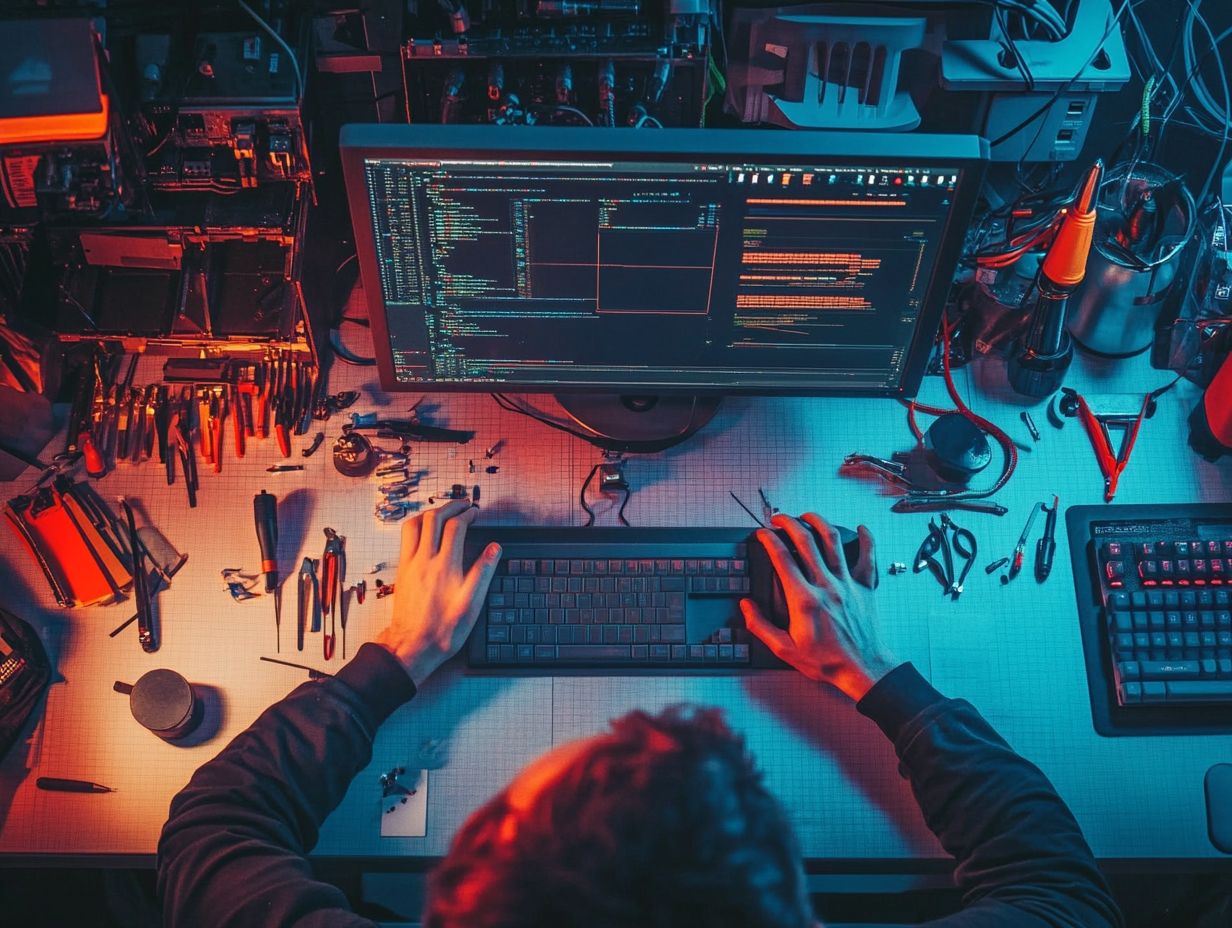
Basic troubleshooting steps for addressing monitor issues usually involve checking connections, adjusting the refresh rate, and confirming resolution settings.
- First, make sure that all video and power cables are securely connected to both your monitor and computer. Loose connections can lead to frustrating display problems.
- Next, take a moment to inspect the cable itself for any visible damage that might hinder performance.
- Once you ve verified your cables, you can delve into the monitor s settings through the graphics control panel on your computer.
- Here, adjusting the refresh rate to match your monitor’s specifications can significantly enhance display quality.
- It s essential to confirm that the resolution settings align with the monitor s native resolution, ensuring that you enjoy optimal clarity and performance.
Now that you’re equipped with these troubleshooting tips, take action and ensure your monitor runs at its best!
Advanced Troubleshooting Techniques
Advanced troubleshooting techniques provide deeper insights into monitor issues. This often involves checking BIOS settings or using diagnostic tools.
In many cases, resolving these issues requires you to ensure that the drivers for your display technology are up to date. You might need to check for operating system updates that can fix conflicts or bugs.
Alternatively, venturing into the BIOS settings can unveil valuable monitoring capabilities, allowing you to assess your hardware s performance in real time. This comprehensive approach not only aids in pinpointing the root causes of monitor failures but also bolsters overall system stability, ensuring that all components work together in perfect harmony.
Fixing Common Monitor Issues
Fixing common monitor issues is key for smooth computer use, especially for screen clarity and color accuracy.
To tackle prevalent problems like screen flickers, vertical lines, or color mismatches, you may need to update your video drivers, tweak your video settings, or utilize specific troubleshooting techniques.
By mastering these solutions, you can spare yourself from unnecessary frustration and significantly extend the lifespan of your Dell monitors or laptops.
Solutions for Common Problems
Solutions for common monitor issues can often be achieved with simple adjustments and settings tweaks.
For instance, by monitoring the refresh rate and ensuring it aligns with your monitor’s specifications, you can significantly reduce flickering. Adjusting your graphics card settings may also help eliminate those pesky vertical lines.
For dead or stuck pixels, specialized software can be your ally! It cycles through colors to try to revive the pixel.
If these problems persist, try gentle pressure techniques or check your warranty options to resolve the issues quickly and effectively, ultimately enhancing your overall display performance.
Preventing Monitor Issues
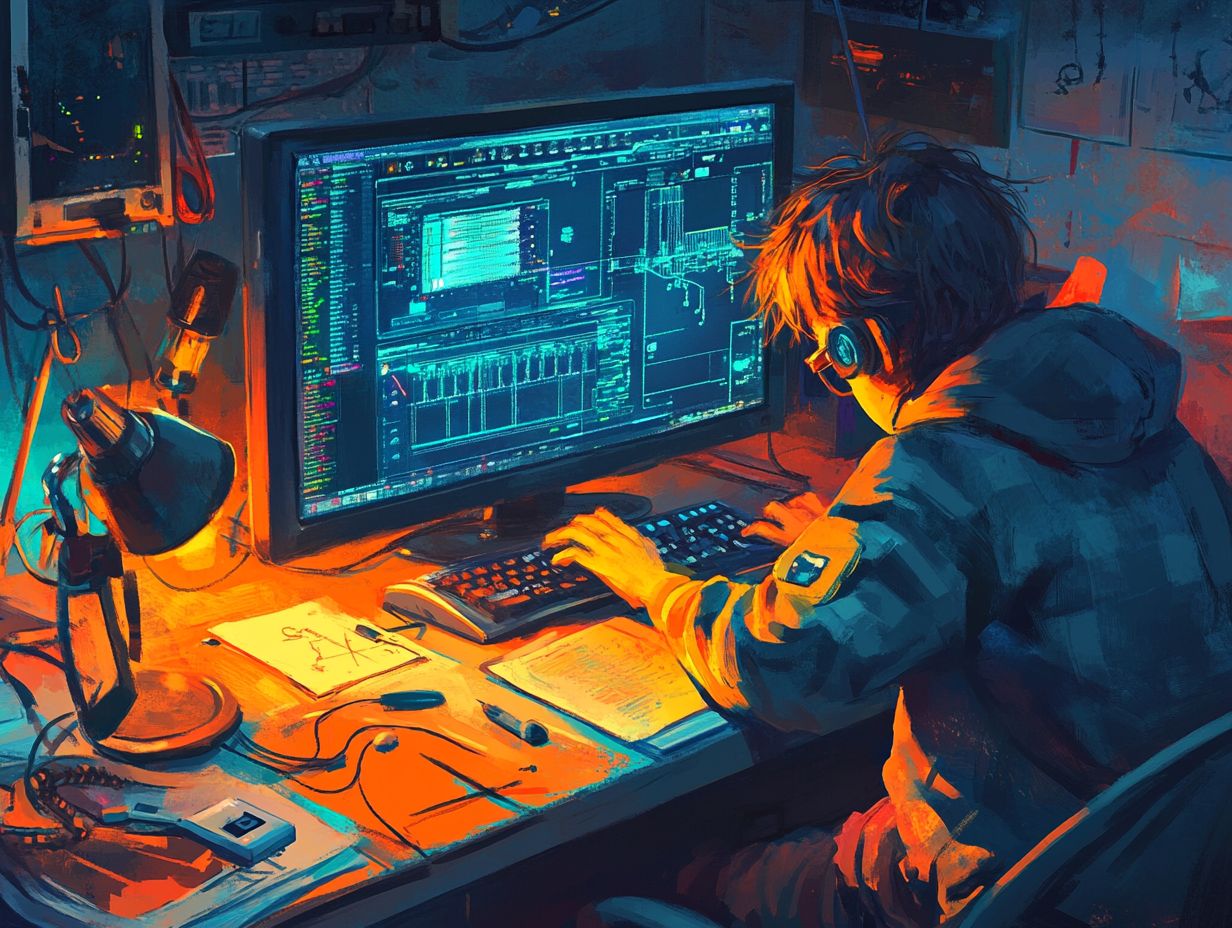
Preventing monitor issues is a proactive strategy that can greatly enhance display performance and extend the lifespan of your equipment.
Doing regular maintenance tasks like adjusting brightness levels and ensuring optimal resolution settings is crucial for maintaining your monitor’s functionality.
Knowing the signs of potential problems helps you fix issues before they become serious.
Tips for Maintaining a Healthy Monitor
To maintain a healthy monitor, you should regularly check brightness levels and resolution settings to ensure optimal display performance.
Along with these adjustments, it s essential to periodically inspect hardware components like cables and connectors for any signs of wear or damage, as these can significantly affect your viewing experience.
Regularly updating your software drivers is also important; it guarantees that your display operates with the latest enhancements and fixes, promoting not only better visuals but also improved compatibility with new applications.
By implementing these routine checks, you extend the lifespan of your monitor and help prevent common issues, ensuring a consistently smooth and productive working environment.
When to Seek Professional Help
Understanding when to seek professional assistance for monitor issues is essential, particularly when your troubleshooting efforts fall flat.
Certain signs can signal the need for technical support, such as persistent screen flickers, unresponsive display settings, or an utter lack of screen output.
While a diagnostic tool can be useful in identifying the problem, if the issue persists, reaching out to Dell technical support or a qualified technician becomes imperative.
Don’t hesitate to contact Dell technical support or a technician if you’re stuck!
Signs that a Professional is Needed
If you notice persistent display abnormalities that basic troubleshooting can’t fix, it might be time to call a professional.
For example, if your monitor continues to flicker or show color distortions despite your best efforts with standard solutions, this could mean there s a bigger problem.
Frequent signal loss or connectivity issues often point to hardware failure that requires expert help.
Additionally, if your device emits unusual sounds or shows signs of overheating, these are red flags that require immediate attention.
When basic diagnostics fail to pinpoint the issue, seeking specialized help is crucial to restore functionality and ensure optimal performance.
Frequently Asked Questions
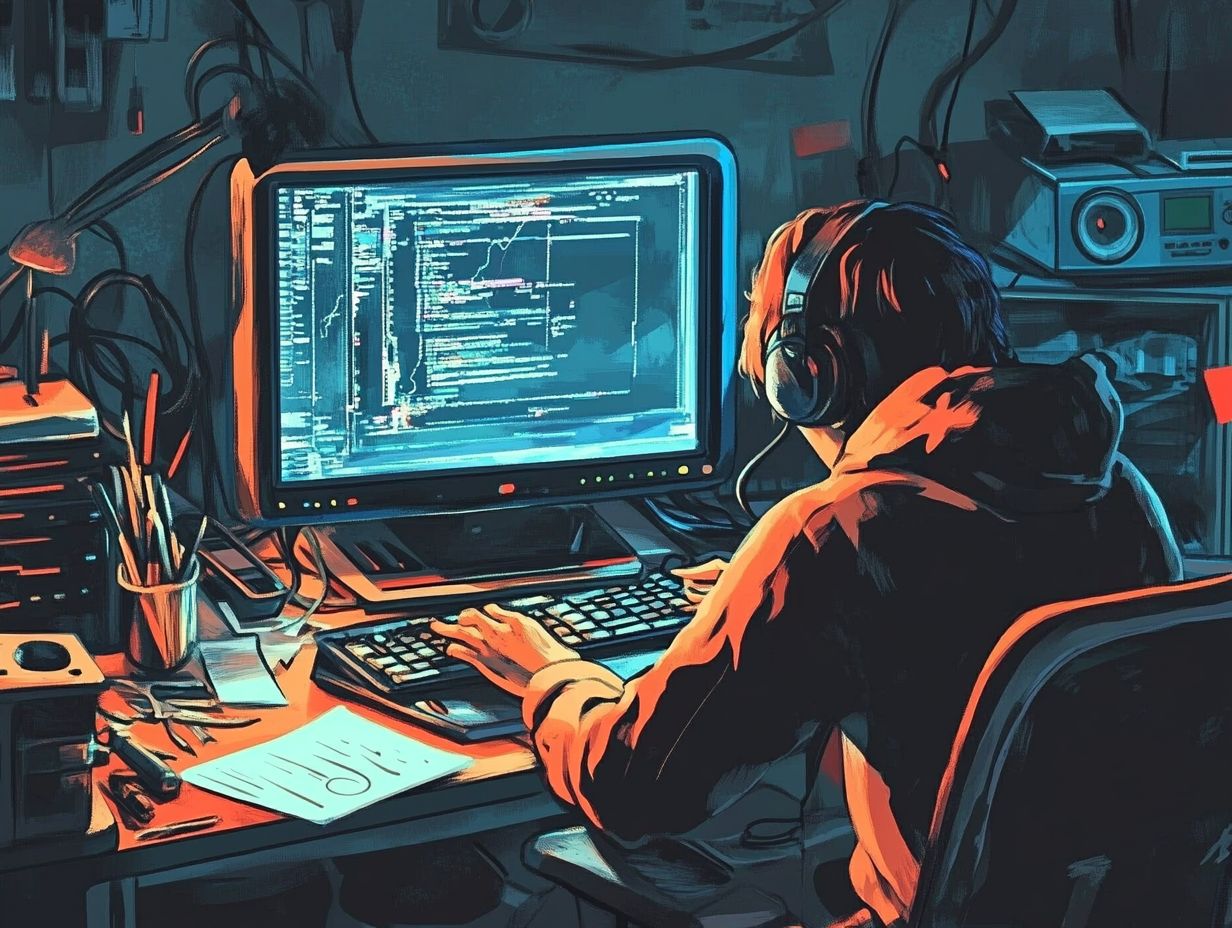
How do I troubleshoot a blank screen on my monitor?
To troubleshoot a blank screen, first ensure your monitor is properly connected to your computer and receiving power. If those are not the issues, try adjusting the brightness and contrast settings.
If the screen remains blank, the problem might be with your computer’s graphics card or the monitor itself.
Why is my monitor displaying a distorted image?
A distorted image can be caused by various issues. Start by checking the connections between your computer and monitor, along with the monitor’s settings.
If everything appears fine and the issue persists, it could be due to a faulty graphics card or a hardware problem with the monitor. Updating your graphics card driver may also help.
How do I fix a flickering or flashing screen on my monitor?
A flickering or flashing screen might stem from a loose connection, damaged cables, or outdated graphics card drivers. Start by reseating the cables and updating your drivers.
If that doesn t work, the issue may lie with the monitor itself.
What should I do if my monitor is displaying the wrong resolution?
If your monitor shows the wrong resolution, first check your computer’s display settings to ensure the correct resolution is selected.
You may also need to update your graphics card driver or adjust the settings on the monitor. If the issue persists, there may be a hardware problem with the monitor.
How do I troubleshoot color display issues on my monitor?
If you’re experiencing color display issues, check the cable connections and ensure the monitor is set to the correct color mode.
If that doesn t resolve the problem, it could be due to a faulty graphics card or monitor. Calibrating the color on your monitor using a calibration tool might also help.
What should I do if my monitor won’t turn on?
If your monitor won t turn on, first check the power connection and ensure it s turned on.
If those steps don t resolve the issue, try replacing the power cable or using a different outlet. If the monitor still won t turn on, there may be a hardware issue that needs professional repair.
Don’t hesitate to reach out for help or consult further resources if you’re facing persistent issues!

